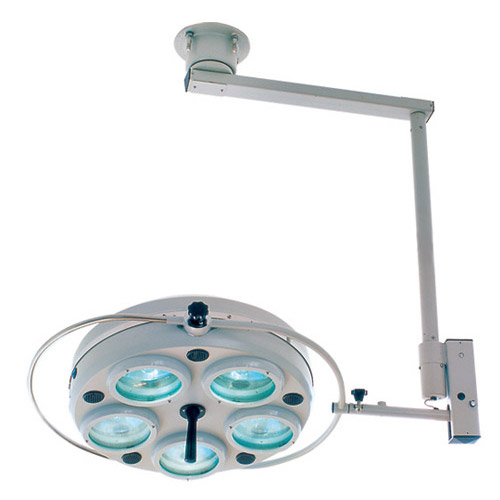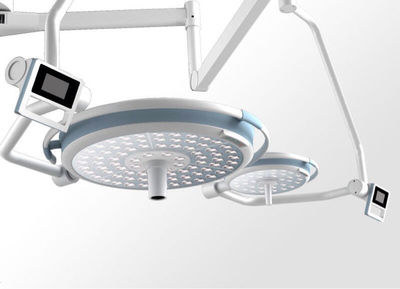LED shadowless lamp is a widely used lighting device in the medical field, and its performance characteristics mainly include the following aspects:
Lighting effect
Good shadowless effect: By forming an array of multiple LED beads, the surgical area is illuminated from different angles, effectively eliminating shadows and providing a clear view for the surgery.
High light intensity: It can provide light intensity of up to 100000 lux or more, meeting the observation needs of details during surgery.
• Suitable color temperature: The color temperature is usually between 4000K and 6000K, close to natural white light, allowing doctors to accurately distinguish tissue color and lesion conditions.
optical performance
High color rendering index: generally above 90, it can truly reflect the color of objects and help doctors accurately judge the health status of tissues.
High uniformity of light spot: The light emitted by the lamp head is evenly distributed in the illuminated area, avoiding local brightness or darkness and reducing visual fatigue.
safety performance
Low temperature lighting: LED beads generate less heat, and through good heat dissipation design, the surgical area is kept at a suitable temperature, reducing the risk of tissue burns.
• No radiation: does not produce harmful ultraviolet and infrared radiation, and has no adverse effects on the human body and medical equipment.
High reliability: Multiple sets of LED beads are used, so even if some beads fail, the remaining beads can still meet basic lighting needs and have good electrical safety.
Operational performance
Strong adjustability: The lamp head can be flexibly rotated and adjusted, and the irradiation angle and range can be adjusted according to surgical needs.
• Diverse control methods: Supports multiple control methods such as manual, foot pedal, or remote control, making it convenient for doctors to operate according to actual situations during surgery.
Post time: May-12-2025



